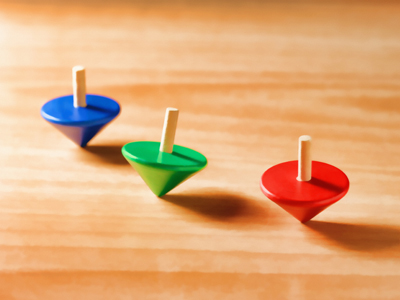This GCSE Physics quiz takes a look at forces and turning effects. You use turning forces every day but probably don't even think about them - switching on a light and opening a door are just two examples. The turning effect of a force is called a moment. A moment is created when a force is applied to an object that is attached to a pivot. A pivot is a pin or shaft that fixes an object in place but also allows the object to move around it. You will probably have done calculations involving levers in your lessons, in the context of levers, the pivot is referred to as a fulcrum. There is also a word that describes the force that tends to produce rotation - torque. This word does have other meanings too and engineers use it instead of the scientific word moment.
If you ever do maintenance on your bicycle, particularly if it has hydraulic disc brakes, you will sometimes see the recommended torque for tightening the bolts written in the instructions. This tells you how tightly the bolts should be fastened and can be done by using a torque wrench which is a tool that can be set to tighten bolts to a specific value. Torque values are important - too tight and the bolt can be weakened, not tight enough and the bolt could become loose or even come out of place completely. There have been cases of wheels coming off cars because the bolts have not been tightened enough or over-tightened so much that they break due to the forces acting on the wheel when the car is moving at high speed.
Whatever term is used, pivot or fulcrum, torque or moment, the calculations and effects are the same. The moment of a turning force depends on just two things - the size of the force and the perpendicular distance from the force to the pivot or fulcrum. When you multiply the two figures together, you have the magnitude (size) of the moment. When the distance is in metres (m) and the force is in newtons (N), the units of a moment are therefore newton metres (N m).
In the exam, quite often calculations are designed to test your knowledge of how to calculate a moment and your understanding of the principle (or law) of moments. When you consider a system with a pivot, a force on one side of the pivot can cause the system to turn in a clockwise direction. A force on the other side of the pivot would cause the system to turn in an anticlockwise direction. Think about a see-saw looking at it from the side. One person gets on the left hand side of the see-saw and that side goes down. It has moved in an anticlockwise direction. If a second person sits on the other side, they can make the other side of the see-saw move in a clockwise direction.
If they are the same weight and sit at exactly the same distance from the pivot, the see-saw will be balanced. That is the principle of moments - when an object is not turning round its pivot, the sum of the clockwise moments is equal to the sum of the anticlockwise moments. The two people on the see-saw can make it move by changing their moment - leaning backwards or forwards, increasing the force by using their legs against the ground, sitting closer to the pivot, getting someone else to sit on the see-saw and so on.
The way in which weight is distributed compared to the position of the centre of mass can affect an object's stability. This is because a moment is created. The centre of mass of an object is defined as the point through which all of the mass of a body appears to act. In practical terms, if you can suspend an object from its centre of mass, it would be perfectly balanced. If a force is applied off-centre, it means that the force is acting at a distance from the centre of mass. This creates a moment which causes an unstable equilibrium. If you are near a large building site, watch one of the large gantry cranes - see if you can spot the counterweight that is necessary to balance the moment of the load that they are lifting to help to avoid an unstable equilibrium.
Turning forces can also produce a neutral equilibrium, for example, a ball doesn't fall over when a turning force is applied, it rolls. Conical objects and cylinders are also in a state of neutral equilibrium.








